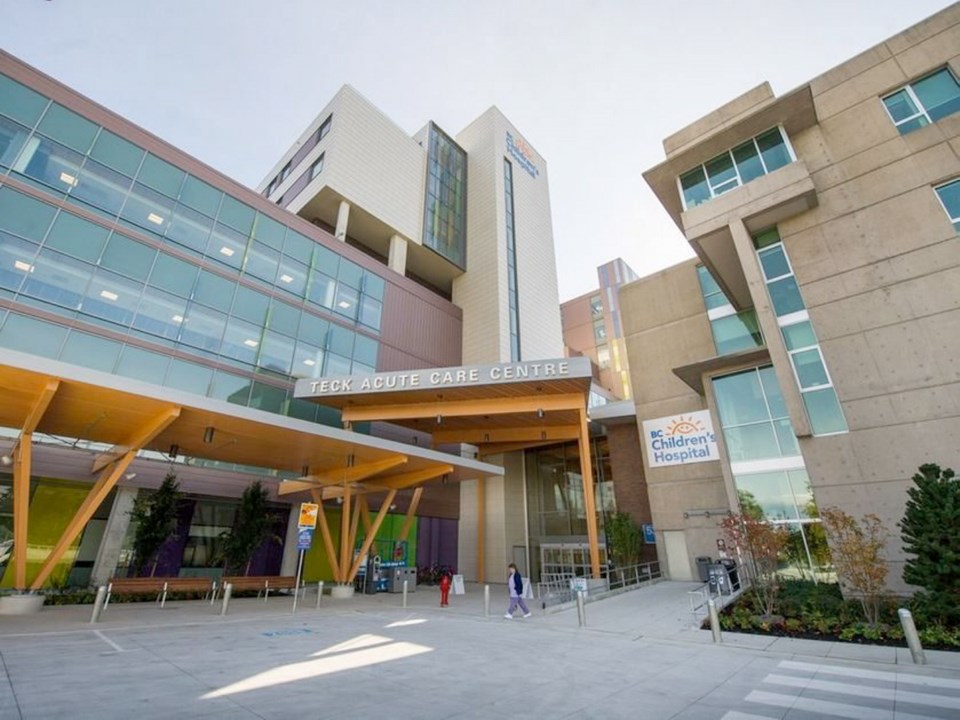An automatic computer system feed that is supposed to send ultrasound results to doctors at B.C. Children’s Hospital was inadvertently disabled nearly a year ago.
The glitch was only recently discovered and has not yet been addressed with a permanent fix.
The problem has meant radiologists at the hospital must do a retrospective medical chart review for thousands of cases to find out if the error delayed and impaired the diagnosis, treatment and prognosis for any children who had ultrasounds at Children’s Hospital, either as admitted patients or outpatients.
Dr. John Mawson, head of radiology, said he has been manually checking 4,000 paper and electronic medical files to make sure that doctors received the radiology reports for ultrasounds, especially if there was anything of concern in the findings.
“I’ve separated out the reports that had critical or significant findings to look at how the documentation and communication of results were handled contemporaneously,” Mawson told Postmedia News.
So far, Mawson is satisfied that in half of the cases, doctors got the results they needed promptly. However, a few dozen children have been the focus of further checks to make sure their doctors got abnormal ultrasound imaging results and followed up with them. One case, in
particular, has resulted in further testing and followup.
Mawson said he has stepped away from radiology duties to lead the “incredibly labour intensive” review. The exercise he began a month ago has reassured him that the vast majority of radiologists have been fastidious in phoning referring doctors with abnormal findings and that doctors ordering such tests also did their due diligence.
But Mawson acknowledged that radiologists — like any humans — can make errors.
“We’re not perfect,” he said. “There’s no question this is a learning opportunity.”
Asked why there wasn’t a widespread notice sent to doctors or patients to alert them to the matter, Mawson said it could have been considered if his preliminary investigation had identified a large number of reports with concerning results that were never sent to doctors.
Parents of children who have had an ultrasound (not any other kind of imaging test) at the hospital in the past 11 months should feel free to follow up with referring doctors to ensure results were received, he said. Likewise, any doctors concerned about whether they received patient records can also contact the hospital.
Once the investigation into all the patient files has been completed, a quality assurance review — either internal or external — will take place to get to the bottom of how and why the glitch occurred and how to prevent it from happening again, Mawson said.
A permanent fix will be put in place once experts figure that out. Until then, ultrasound test results are being placed in patient’s electronic hospital charts and for outpatients, they are being manually faxed to doctors who aren’t hospital staff.
“I’m not an IT person so I’m not entirely sure what led to this but we’ll do a review to understand that,” Mawson said, adding that it’s not clear why only a portion of the ultrasounds done in the 11-month period was affected by the auto-feed glitch. The glitch was discovered when some doctors complained they had not received results of patients’ ultrasound tests.
Vincent Chou, a spokesman for Provincial Health Services Authority, said the automated feed was disabled on Feb. 6, 2017 when a new software system came into effect.
“This does not mean that 4,000 results went unknown to care providers who ordered the exams,” Chou said.
“Results with serious or unexpected findings are directly discussed with the ordering physician via telephone to ensure that the results are known at the earliest opportunity. That said, our radiologists continue work to look at the reports with positive (concerning) findings and recheck to ensure patients received the care needed if indicated. At this point, there are a couple of dozen exams for which we have connected with primary care providers to ensure they received the exam results and ensure the appropriate followup took place with their patients.”
Radiologists typically call referring doctors when they spot serious or surprising results. But last year, the College of Physicians and Surgeons of B.C. was critical of a radiologist who did not call an obstetrician with concerning results. The communication lapse between doctors — which was reported late last summer by Postmedia News — led to a delayed caesarean section which then contributed to the stillbirth of a baby at Abbotsford Hospital.
Ultrasounds
Use a high-frequency sound beam to visualize internal structures in the body.
Scans can be performed on many different parts of the body. At B.C. Children’s Hospital, the following ultrasounds are most commonly done:
• Neonatal brain (portable ultrasound exams in the Special Care Nursery)
• Abdominal organs (ie: liver, gallbladder, kidneys, pancreas, etc.)
• Pelvic organs (ie: uterus, ovaries, bladder, testes)
• Small parts (ie: thyroid gland, ophthalmic, breast, etc.)
• Vascular (i.e.: extremity vessels, abdominal vessels)



